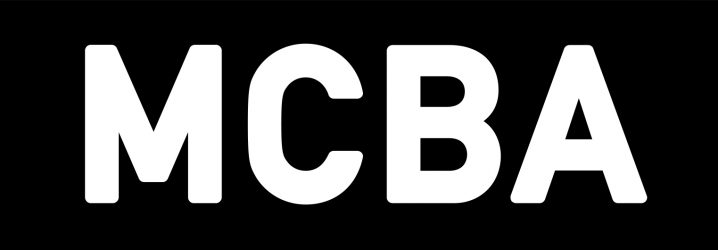Kitty Maryatt’s Pochoir Process
 The process plates and prints on exhibit show how the new edition of La Prose du Transsibérien was produced. The first step in reproducing an artwork is to study the artwork carefully to see if any underlying printing is necessary. Then tracings of the artwork are begun to determine every color used. Swatches of color are developed matching the gouache color on the original: in La Prose there were sixty-six colors needed, requiring sixty-six pochoir brushes. Establish the order of brushing on the color: usually the order is from light to dark, but look at the original for layering evidence. There were four 16 x 23 inch pages where the text was first printed by letterpress in four colors, requiring sixteen print runs, by Richard Siebert in Berkeley, CA. Blaise Cendrars used thirty different typefaces in his poem.
The process plates and prints on exhibit show how the new edition of La Prose du Transsibérien was produced. The first step in reproducing an artwork is to study the artwork carefully to see if any underlying printing is necessary. Then tracings of the artwork are begun to determine every color used. Swatches of color are developed matching the gouache color on the original: in La Prose there were sixty-six colors needed, requiring sixty-six pochoir brushes. Establish the order of brushing on the color: usually the order is from light to dark, but look at the original for layering evidence. There were four 16 x 23 inch pages where the text was first printed by letterpress in four colors, requiring sixteen print runs, by Richard Siebert in Berkeley, CA. Blaise Cendrars used thirty different typefaces in his poem.
Choose your initial color and make a tracing of all instances on one page; draw on registration marks matching the registration base plate. Draw registration marks on the aluminum pochoir plate (patron) and place the tracing on top, matching registration marks. Cut each shape with a knife (Olfa AK 1/5B) by plunging it into the metal and sliding it out and back in again, with a thick neoprene rubber pad underneath. Remove the tracing and roll out the bumps on a marble slap with a champagne bottle filled with lead shot. Ninety-three plates were hand-cut for the La Prose edition.
Mix a jar of your selected color to the thickness of skim milk. Select the appropriate size of pochoir brush (from Talas), put a small puddle of the color into a small plate and swirl around the brush to wet it. Then brush into each hole, using a counterclockwise swirling motion. Remove page, add new page, and repeat. The edition for the re-creation of La Prose is 150 copies plus 30 hors commerce; groups of 30 copies were done with one color for practical purposes, but all 180 copies of one color would normally have been done at once. There are still 60 copies left in the edition to make, which may take another year. All the other copies were sold (thirty were given to the underwriters).
The pages are folded in half vertically, then the edges are cut to size, the four parts glued together to make a scroll, and finally the book is folded into twenty-one panels. In the 1913 edition, the book was placed into a simply folded painted vellum cover. In the new edition, the book with its vellum cover was placed into an acrylic slipcase. Later, a deluxe edition was created with a different folding pattern: double wide, double tall, and was bound in an aluminum cover with cut-outs evoking pochoir plates.
1.
La Prose hanging: La Prose du Transsibérien Re-creation, Two Hands Press, 2018. Edition of 150 copies, plus 30 hors commerce. This format is the original folding pattern: you cannot see either the type or image until the book is completely unfolded, encouraging a simultaneity of experiencing the poem and image all at once. Kitty Maryatt worked with Nathalie Couderc and Christine Menguy at Atelier Coloris in Ploubazlanec, France in order to learn traditional French pochoir, starting in 2015.
2.
La Prose du Transsibérien Re-creation, Two Hands Press, 2018. Richard Siebert printed the edition in four colors. This is page four. The printing must be completed before the pochoir can commence.
3.
La Prose du Transsibérien Re-creation, Two Hands Press, 2018. Tracing of the purples on page four, taped to aluminum pochoir plate prior to cutting. The full tracing of page four is under the pochoir plate to the right. The aluminum plate is .0055 inches and is an offset plate commonly used in France. The traditional plate was usually either zinc or copper of various thicknesses, but many years ago Atelier Coloris could no longer obtain the zinc plates and changed to aluminum.
4.
La Prose du Transsibérien Re-creation, Two Hands Press, 2018. Base registration system onto which the tracing of page four is attached. Kitty changed the system from the traditional French technique of cutting holes matching the pochoir on previously-done pages to a line system, which she was used to as a printer. She then taped the plate to the board, instead of the traditional method of holding the plate in the left hand and then laying down the plate onto the registration holes. She found that she just couldn’t be accurate enough.
5.
La Prose du Transsibérien Re-creation, Two Hands Press, 2018. Practice pages from page four. Kitty has been doing pochoir on groups of pages, rather than trying to complete 180 pages of each of the 66 colors as would have been done traditionally. She needed to complete and sell at least 50 copies in order to pay back her twelve underwriters. For each group of 30 to 50 pages, she had an extra practice sheet to make sure the position of the plate was correct, and that the intensity of color matched her color charts, and to practice the gesture before she started on the group.
6.
La Prose du Transsibérien Re-creation, Two Hands Press, 2018. The book was first printed with the type in four colors on four sheets of paper, larger than the finished size. Some of the extant books have never been glued together, so Kitty could examine the margins on several of the originals. For her edition, she asked the printer Richard Siebert to add crop lines in the margins, and a line at the side for cutting the pages just above the type to glue the overlapping pages. These lines were also helpful to the binders for this exhibit who were given the book in sheets to bind.
The slide show details the sequence of some of the pochoir plate colors. The show includes progressives of all of the pages on the left side of the book.

